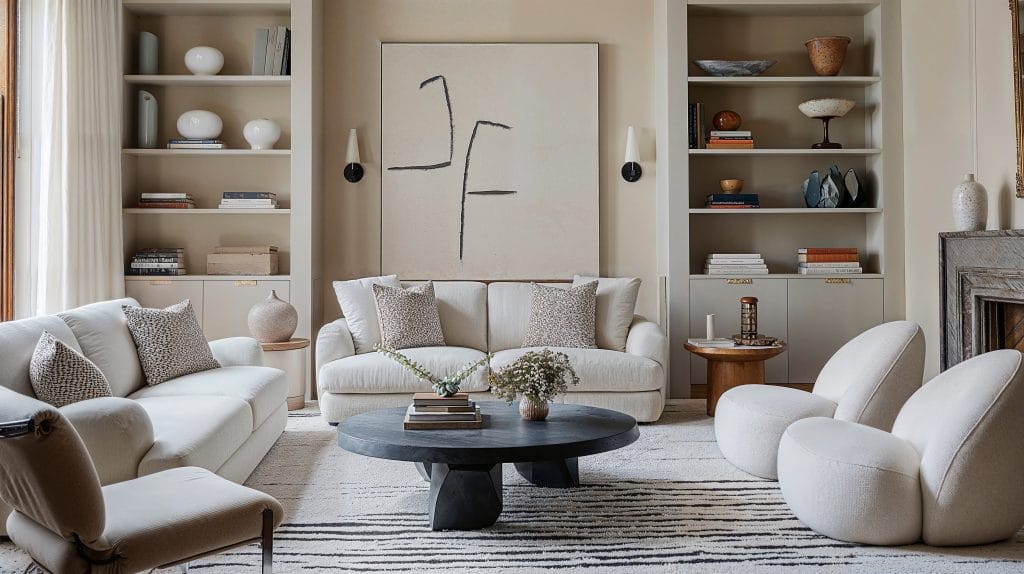Achieve a stunning look with miami interior design that reflects elegance and functionality.
Achieve a stunning look with miami interior design that reflects elegance and functionality.
Blog Article
Transform Your Home With Necessary Principles of Inside Design and Visual Appeals
By comprehending the influence of color concept and the significance of appearance and patterns, one can develop areas that are not just visually appealing however additionally deeply personal. Accomplishing this balance entails even more than plain design; it includes a strategic arrangement and an eager understanding of exactly how each element interacts within a space.
Comprehending Shade Concept
Shade theory is a basic element of interior layout that significantly influences mood, perception, and overall visual. Recognizing the concepts of color concept enables developers to produce spaces that resonate psychologically with passengers while satisfying useful requirements (miami interior design). Colors can be classified right into 3 key kinds: main, second, and tertiary. Each group plays a crucial duty in developing harmony within a room.
The psychological influence of colors is profound; cozy shades such as reds and oranges stimulate power and warmth, while great tones like blues and eco-friendlies advertise calmness and tranquility. In addition, the use of corresponding colors enhances aesthetic rate of interest, developing striking contrasts that can boost a space's allure.
Neutral colors, on the various other hand, function as a flexible background, allowing other layout elements to radiate. It is vital to think about elements such as lights and the area's objective when choosing a color scheme, as these can change the perception of colors throughout the day.
Eventually, a well-considered color design can transform a space, promoting a sense of convenience and design that straightens with the citizens' preferences. Mastery of color theory is, for that reason, a crucial ability for any kind of indoor designer aiming to develop harmonious and welcoming settings.
Accomplishing Balance in Layout
Just how can designers accomplish a feeling of stability in their spaces? Achieving equilibrium in style is essential to producing harmonious interiors.
Asymmetrical equilibrium, on the other hand, relies upon varying elements that still attain a natural appearance. This approach allows for even more vibrant and casual arrangements, supplying rate of interest while maintaining equilibrium. By thoroughly choosing varying sizes, colors, and textures, designers can develop a visually compelling room that really feels balanced yet energetic.
Radial equilibrium emphasizes a central prime focus with elements emitting outside. This style is frequently seen in round designs, where furnishings and design develop a natural surround that attracts the eye inward.
Ultimately, achieving balance calls for thoughtful consideration of scale, percentage, and the partnerships in between aspects. miami interior design. By skillfully applying these equilibrium concepts, developers can transform spaces right into environments that really feel both aesthetically pleasing and functionally harmonious, boosting the overall experience for occupants
Significance of Spatial Recognition

An eager sense of spatial understanding enables Website developers to identify prime focus within a space, assisting the viewer's focus to key attributes while maintaining a general sense of unity. It also aids click over here in the critical positioning of illumination, which can dramatically influence the understanding of space and state of mind. Comprehending spatial partnerships enables the designer to cater to the specific needs of citizens, ensuring that each location serves its intended objective without jeopardizing looks.
Ultimately, spatial recognition is critical for maximizing the possibility of any type of interior room. By thoroughly considering the interplay between dimensions, layout, and function, developers can develop settings that not just fulfill functional requirements however additionally stimulate a feeling of convenience and elegance, enhancing the total living experience.
Incorporating Appearance and Patterns
Welcoming a diverse variety of appearances and patterns can substantially boost the aesthetic and tactile appeal of an indoor room. The strategic use of numerous materials-- such as timber, metal, fabric, and rock-- produces deepness and rate of interest, making a room feel a lot more inviting and dynamic. For example, combining smooth surface areas with harsh structures can develop a balance that attracts the eye and engages the detects.
When including patterns, take into consideration both range and repeating. Large patterns can function as centerpieces, while smaller, subtle layouts can enhance other elements without overwhelming the space. Layering patterns, such as pairing flower pillows with striped throws, adds complexity and a feeling of harmony if implemented attentively.
It is likewise important to preserve a cohesive color scheme, making sure that textures and patterns collaborate rather than compete for attention. By selecting a few go right here essential textures and patterns, you can develop a combined aesthetic that reflects your individual design while enhancing the total atmosphere of the room. Ultimately, the cautious consolidation of these elements can transform an ordinary area into an advanced atmosphere abundant with personality and heat.
Individualizing Your Space
Creating a space that mirrors your personality is essential to achieving a really welcoming setting. Customization in interior layout enables you to infuse your one-of-a-kind style and rate of interests right into your home, changing it from a plain sanctuary into a sanctuary that talks to who you are. Begin by picking a shade scheme that resonates with your emotions-- vibrant colors can energize, while soft tones supply peace.
Include art work and style that mirror your enthusiasms, whether it be traveling, nature, or abstract concepts. Presenting personal collections, such as books, photos, or keepsakes, can evoke cherished memories and create prime focus within an area. Additionally, think about customizing functional pieces, like upholstered furniture, to align with your aesthetic choices.

Conclusion
Finally, the transformation of a home through the vital principles of interior decoration and aesthetics demands a detailed understanding of shade theory, balance, spatial understanding, structure, and customization. Each component adds dramatically to developing an unified and functional living setting - luxury interior design. By attentively incorporating these principles, people can improve the visual appeal and psychological resonance of their rooms, ultimately promoting a home that shows one-of-a-kind identities while providing comfort and practicality
Report this page